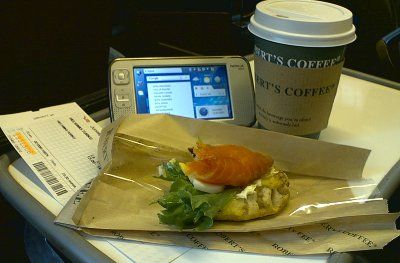Situational devices and synchronization
CloudAve reviews the CrunchPad browsing device, and concludes that these days, a single computer is just not enough for all our needs:
A tablet for lazy surfing, a netbook for travel, an iPhone for when we don’t even want to carry that much, a full laptop for everyday work, and even a full desktop as the multimedia workhorse: at these price levels we may very well have 5-6 or purpose-designed computers, situational devices. Pick up one, continue on the other as you move around – the switch should be seamless, our computing experience is becoming to device-independent.
While the idea of a universal communicator is appealing, the multi-device situation is more practical. However, pick up one, continue on the other is still more wishful thinking than reality. Even if you keep all your data and applications in the cloud, you still face the issue of having to find and open the various browser tabs when you switch devices.
Mozilla Weave is a browser synchronization tool for the upcoming Firefox 3.5 that will hopefully help here, at least on all computers where you can install a browser:
Weave Sync, a prototype that encrypts and securely synchronizes the Firefox experience across multiple browsers, so that your desktop, laptop, and mobile phone can all work together. It currently supports continuous synchronization of your bookmarks, browsing history, saved passwords and tabs.
Having solved this, we still face the problem is that cloud locks your data behind proprietary software run in data centers of multinational corporations. While data portability and standardization slowly help giving users control of their own content, the better free software response would be relying on data synchronization and peer-to-peer connections.
Via Internet Tablet Talk.
Technorati Tags: crunchpad, dataportability, midgard, weave, synchronization
